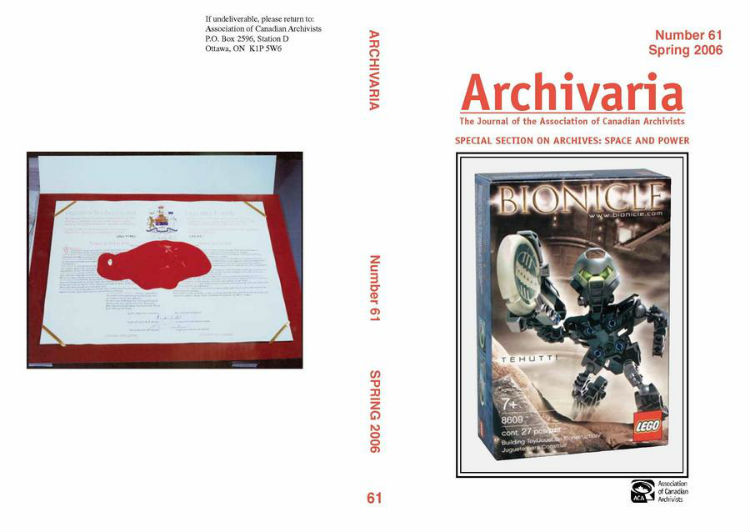Archives, Life Cycles, and Death Wishes: A Helical Model of Record Formation
Abstract
This article develops a model of a concept of record formation. Beginning with an analysis of the temporal qualities of the life cycle in archival practice, it goes on to show how the metaphorical language and concepts of life to which archivists are beholden, have empowered archival thought and practice, but also imprisoned them. Proceeding from this critique, the article then proposes that a helical figure, developed from certain medieval ideas of death, resurrection, and human identity, enables us to develop a temporal model that better accommodates the complex dynamics of “record formations.” The characteristic coiled shape of helical figures permits the depiction of record formation as simultaneously unfolding in a linear and non-linear fashion. The article argues that the concept of record formation better articulates the life-anddeath documentary phenomena archivists encounter and influence in their work than do such notions as “record,” “record-keeping” and “recordness.”
RÉSUMÉ
Ce texte élabore le modèle d’un concept de création de documents (« record formation »). En partant d’une analyse des qualités temporelles du cycle de vie dans la pratique archivistique, il montre ensuite comment le parler métaphorique et les concepts de vie auxquels les archivistes souscrivent sont venus appuyer la pensée et la pratique archivistique tout en les limitant. À partir de cette critique, le texte propose qu’une figure hélicoïdale, basée sur certaines idées médiévales au sujet de la mort, de la résurrection et de l’identité humaine, nous permet de constituer un modèle temporel capable de mieux disposer les dynamiques complexes relatives à la création de documents. La forme spiralée caractéristique de la figure hélicoïdale permet la représentation de la création de documents comme un acte qui se déroule simultanément de façon linéaire et nonlinéaire. Le texte soutient alors que ce concept de la création de documents est plus en mesure d’énoncer les phénomènes documentaires de vie et de mort que les archivistes rencontrent et influencent dans leur travail que ne le font des notions comme « document », « gestion de documents » et « essence du document » (« recordness »).
Authors of manuscripts accepted for publication retain copyright in their work. They are required to sign the Agreement on Authors' Rights and Responsibilities that permits Archivaria to publish and disseminate the work in print and electronically. In the same agreement, authors are required to confirm that "the material submitted for publication in Archivaria, both in its paper and electronic versions, including reproductions of other works (e.g. photographs, maps, etc.) does not infringe upon any existing copyright." Authors of manuscripts accepted for publication retain copyright in their work and are able to publish their articles in institutional repositories or elsewhere as long as the piece is posted after its original appearance on archivaria.ca. Any reproduction within one year following the date of this agreement requires the permission of the General Editor.





